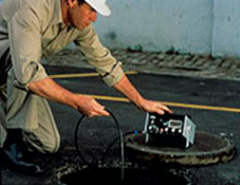Contractors Counsel: OSHA's Confined Space Standard for Construction

By: Trent Cotney, Cotney Construction Law.
To better understand the allocation of responsibility under OSHA’s confined space standards, it’s helpful to understand the definitions of the parties involved with the permit space.
According to the Occupational Safety and Health Administration (OSHA), a confined space is one that is large enough for an employee to enter fully and perform assigned work, such space is not designed for continuous occupancy, and is limited or restricted in means of entry or exit. Some examples include tanks, storage bins, silos, and underground vaults to name a few. A confined space is determined to be a permit-required confined space if has one or more of the following: potential hazardous atmosphere; material with potential to engulf an entrant; can cause entrant to be trapped or asphyxiated by inwardly converging walls/floors sloping downward, or any other serious safety/health hazard.
In order to better understand the allocation of responsibility under OSHA’s confined space standards, it’s helpful to understand the definitions of the parties involved with the permit space. A competent person is one who is capable of identifying existing and predictable hazards in the surroundings or working conditions which are unsanitary, hazardous, or dangerous to employees and who has the authority to take prompt corrective measures to eliminate them.
A controlling contractor is the employer that has overall responsibility for construction at the worksite. A host employer is the employer that owns or manages the property where the construction is taking place. The entry employer, which is a new term to the standard, refers to any employer who decides that an employee it directs will enter a permit space; in other words, this may be a roofing contractor, whether a contractor or subcontractor. An attendant is an individual stationed outside one or more permit spaces who assesses the status of authorized entrants and who must perform duties specified by section 29 CFR 1926.1209. An entry supervisor refers to the qualified person responsible for determining if acceptable entry conditions are present at a permit space where entry is planned, for authorizing entry and overseeing entry operations, and for terminating entry as required.
Log in and read more. Not a member of WSRCA? Join today.
Photo credit: OSHA























Comments
Leave a Reply
Have an account? Login to leave a comment!
Sign In